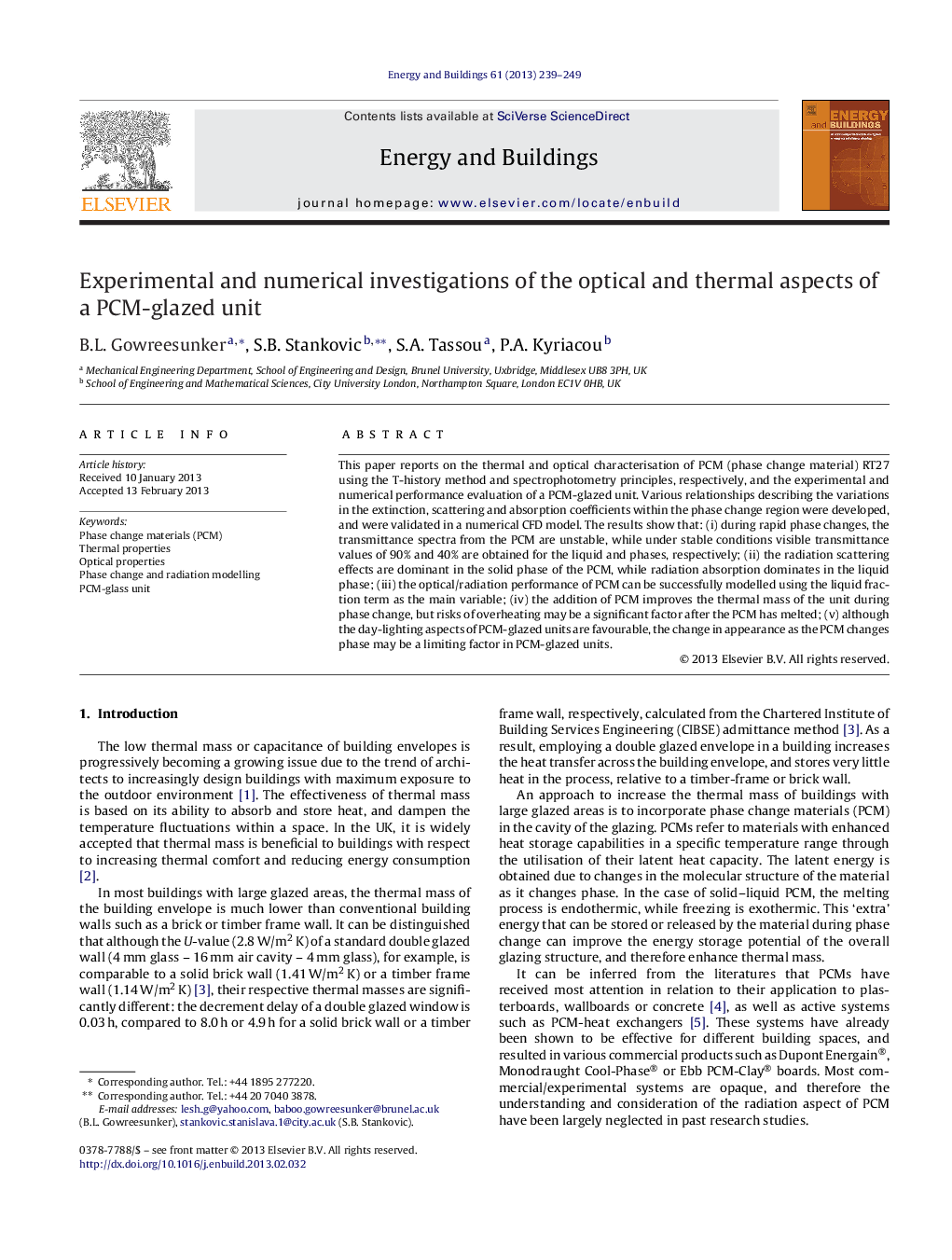| Article ID | Journal | Published Year | Pages | File Type |
|---|---|---|---|---|
| 263459 | Energy and Buildings | 2013 | 11 Pages |
This paper reports on the thermal and optical characterisation of PCM (phase change material) RT27 using the T-history method and spectrophotometry principles, respectively, and the experimental and numerical performance evaluation of a PCM-glazed unit. Various relationships describing the variations in the extinction, scattering and absorption coefficients within the phase change region were developed, and were validated in a numerical CFD model. The results show that: (i) during rapid phase changes, the transmittance spectra from the PCM are unstable, while under stable conditions visible transmittance values of 90% and 40% are obtained for the liquid and phases, respectively; (ii) the radiation scattering effects are dominant in the solid phase of the PCM, while radiation absorption dominates in the liquid phase; (iii) the optical/radiation performance of PCM can be successfully modelled using the liquid fraction term as the main variable; (iv) the addition of PCM improves the thermal mass of the unit during phase change, but risks of overheating may be a significant factor after the PCM has melted; (v) although the day-lighting aspects of PCM-glazed units are favourable, the change in appearance as the PCM changes phase may be a limiting factor in PCM-glazed units.
► PCM RT27 tested in double glazing setup and results used to validate CFD model. ► Numerical model depicts optical and thermal behaviour of PCM during phase change. ► Thermal and optical characteristics of PCM used to develop various relations. ► Various design implications of using PCM-glazing are elaborated.
